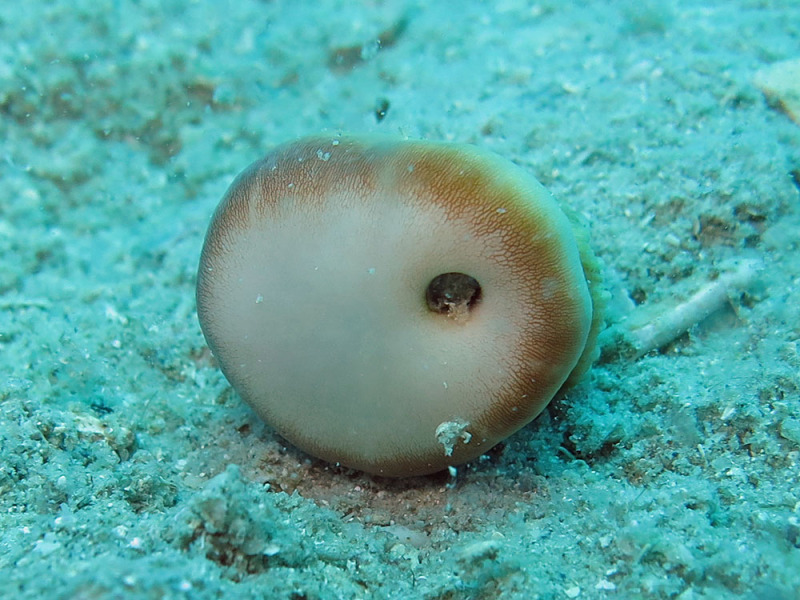�
�

©Anne Hoggett: Heteropsammia cochlea is extremely common in water deeper than 13 metres in Watson's Bay. It is the most common member of a unique assemblage of solitary corals in this area. In this photo, there is also one specimen each of Cycloseris cyclolites and Heterocyathus aequicostatus.

©Anne Hoggett: A sipunculan worm, Aspidosiphon (Aspidosiphon) muelleri, is an obligate commensal with Heteropsammia cochlea. It lives inside the skeleton and can extend its proboscis through a hole in the base of the coral to move the coral and prevent it from becoming buried.
�
���
Heteropsammia cochlea

©Anne Hoggett: Heteropsammia cochlea is extremely common in water deeper than 13 metres in Watson's Bay. It is the most common member of a unique assemblage of solitary corals in this area. In this photo, there is also one specimen each of Cycloseris cyclolites and Heterocyathus aequicostatus.

©Anne Hoggett: A sipunculan worm, Aspidosiphon (Aspidosiphon) muelleri, is an obligate commensal with Heteropsammia cochlea. It lives inside the skeleton and can extend its proboscis through a hole in the base of the coral to move the coral and prevent it from becoming buried.
Kingdom
Animalia
Phylum
Cnidaria
Class
Hexacorallia
Order
Scleractinia
Family
Dendrophylliidae
Genus
Heteropsammia
Species
Heteropsammia cochlea
Colours
Distinguishing features
Distinguishing features still need to be specified.
Size
- Size data has not been obtained.
Synonyms
Interesting facts
- These small free-lving corals are mobile due to their obligatory association with sipunculan worm, Aspidosiphon (Aspidosiphon) muelleri(Fisk, 1983)
Distribution
Web resources
References
References that assist with identification
- Veron, J.E.N. (2000). Corals of the World Australian Institute of Marine Science, Townsville.
Other references
- Fisk, D.A. (1983). Free-living corals: distributions according to plant cover, sediments, hydrodynamics, depth and biological factors, Marine Biology, 74: 287-294. LIRS catalog number 107.
- Grygier, M.J. (1981). Petrarca okadai, a new crustacean (Maxillopoda: Ascothoracida) from the Great Barrier Reef, the first shallow-water record of the genus, Journal of Crustacean Biology, 1(2): 183-189. LIRS catalog number 71.
- View all references






